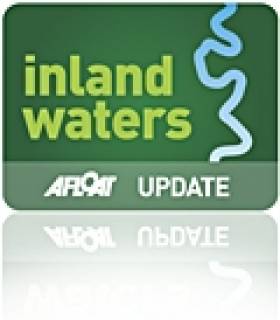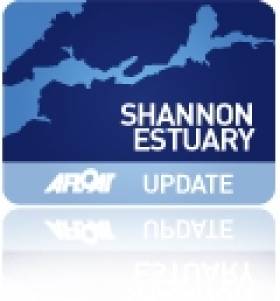Displaying items by tag: Riverfest
#INLAND WATERWAYS - Northern Ireland will welcome avid fans of watersports from across the UK and Ireland next month when the Waterways Ireland Riverfest returns for 2012.
Christie Park between the bridges in Coleraine will play host to the Riverfest for a sixth consecutive year on Saturday 11 and Sunday 12 of August.
Over the years this family-orientated event has attracted tens of thousands of visitors to Ireland's inland waterways, and this year a full programme of water- and land-based activities is sure to entertain and engage, including waterskiing, jetskiing, wakeboarding and barefooting by a team of world-class athletes.
Following on from the success of previous years' events, Riverfest will highlight the cream of Irish talent with shows from the Xtreme Action Team headed by Ant Burgess, wowing the crowds with inverts of up to 20ft.
The Waterways Ireland Wakeboard Open Championship will bring together the 30 best wakeboarders from all over Ireland to compete in a two-round competition over the weekend. (Wakeboarders click HERE for details on how to take part.)
Also in the line up is Caite Skelly, a 14-year-old from Coleraine who will be barefoot waterskiing at over 40mph.
Event organiser Rob Skelly said: “The Waterways Ireland Riverfest has been a phenomenal success since we launched five years ago. For 2012, the line-up will be bigger and better cementing its reputation as one of the best water-sports events across the UK and Ireland."
Foynes Flotilla Sails into Riverfest
A north-easterly force 3 wind accompanied the flotilla of yachts that set out from Foynes Yacht Club, who sailed to Limerick city on Saturday afternoon to participate in the Riverfest celebrations.
Daniel Butler co-ordinator took members of the Northside We're Ok youth group from Moyross, who experienced another view of Limerick from the river. John Prendergast and his wife, Maureen, were guests of the club on this cruise.
The yacht's that journeyed were Mweeloon, Whyte Dolphin, Alphara, Inizi, Mariposa, Lady Shanannah, Hello, Kilteery, Kerry Dream, Battle, Dexterity, Coral Dos and Blue Ribbon. Unfortunately, Marengo had to turn back at Aughinish because of engine trouble, the skipper, Pat Finucane and crew changed boats and were transported on on Ger Reidy's, Kilteery.
The sun shone all the way for the sight-seeing journey up this magnificent of stretch of water. The Islands on the Shannon Estuary Cannon and Horseshoe are one of the first sights that can be seen on this stretch of the river. The bauxite smelting factory, Aughinish Alumina and the famous Beeves Rock lighthouse, no more in use gives an added pictureesque setting to this journey.
Further on the right-hand side the entrance into the Deel Boat Club in Askeaton can be seen on the the same shore the pre-Norman Beagh Castle is standing overlooking the Shannon. Ringmoylan, and Pallaskenry can be seen down a mile from the castle, and opposite Rineanna with the famous Shannon Airport, who hosted several US President's who stopped off to visit this country.
As we continued our journey up river the landmark, Carrigagonnell Castle is visible, also the giant chimneys of the Cement factory in Mungret and the giant-sized structure of Thomond Park.
Nearer to the city Riverpoint and the Clarion Hotel, two of the tallest buildings in Limerick, rise up to the blue sky and sunshine of May.
When the flotilla approached the Clarion Hotel, they berthed for an hour to give the public a chance to see these water vessels in their bunting and memorabilia.
After the inspections were it was into Limerick Docks for an overnight stay, and then on to Dolan's Bar and Restaurant for a much sought-after meal.
On Sunday afternoon the junior members of the club, Ailish Chawke, Claire Lowes, Ciara McCormack, Mary McCormack and Anna Lowes gave a display of sailing kayaks and Topaz boats at Howley's Quay to an array of spectators, who came to see the other craft on the water, Jet-Ski's and Clark Clifford's rib who gave the public a trip up and down the Shannon. Members of the yacht club also gave out flyers promoting Foynes Yacht Club.
When the sailing adventures were over it was time to head back down river to Cooleen Point, where a Bar-b-Que followed in the Clubhouse the sailors and their families. Overall, the reaction from everybody was excellent!
Club racing continus every Wednesday evening with first gun at 7pm. On Saturday, May 14 and Sunday, May 15 the Estuary Bell will be raced in Foynes. Two races on Saturday and one of Sunday are pencilled in.






























































